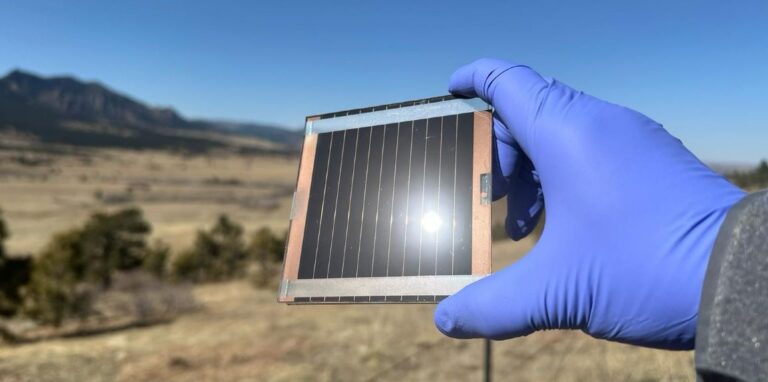US-based PeroNova specializes in metal halide perovskite-silicon tandem solar cells made with a new stability-enhancing interfacial treatment. It targets a range of applications including the aerospace and rooftop markets.
PeroNova, a US-based startup specializing in solar perovskite technologies, has developed a solar perovskite module for building-integrated solar photovoltaics (BIPV) and space applications.
“Our new interfacial treatment technology improves the stability and reliability of perovskite films in testing and under manufacturing conditions. Thermal cycling resistance tests have shown more than 80% of initial energy conversion efficiency after 2,500 cycles,” a PeroNova spokesperson said pv magazine.
The company is currently developing laboratory-scale four-terminal (4T) perovskite-silicon tandem solar cells and 900 cm2 mini perovskite modules. The laboratory-scale cells* are reported to have an efficiency of approximately 30%, while the modules achieve approximately 28% for the 4-T tandem configuration, 22% for outdoor applications and 18% for space applications.
Founded in 2023, PeroNova plans to meet solar energy demand in wearable electronics, aerospace and rooftops. “Our team has worked hard to create a best-in-class American product that provides affordable and reliable renewable energy worldwide,” said co-founder and CEO, Min Chen, in a statement.
The company also recently announced that it is working with unspecified US real estate developers who plan to achieve “large-scale deployment” of BIPV and agrivoltaics across the country. It will also collaborate with undisclosed space technology companies.
PeroNova has received five patents from the US Department of Energy. It also recently appointed Peter H. Diamandis, a US-based entrepreneurial investor and founder of the XPRIZE Foundation added to the advisory board, where he “will advise on product design, commercialization strategy and investor relations.”
*This article has been edited to correct the 4-T mini module efficiency to 28% and to clarify that the 30% efficiency refers to laboratory scale cells.
This content is copyrighted and may not be reused. If you would like to collaborate with us and reuse some of our content, please contact: editors@pv-magazine.com.


